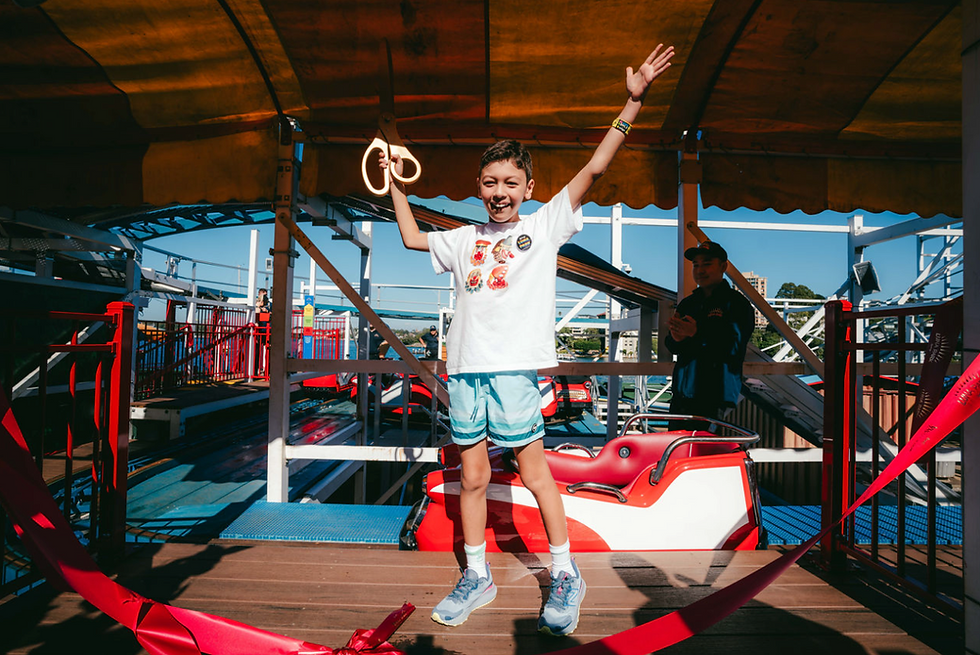No pressure, but think fast or die
- Thrive PR

- Aug 5, 2021
- 3 min read
Updated: Aug 19, 2021
How creativity differs in PR and advertising by Creative Director, Tom Selby

Imagine walking into your house to find that someone has rearranged your kitchen. Your appliances and cookware are mostly there, but in different places. A couple of things are missing, others are shiny and new. The fridge has unfamiliar beer in it.
As a 15-year above-the-line advertising creative, this was what it felt like to step into PR. Creatively, it’s both familiar and completely different. Here are four reasons why.
1. PR requires creativity on speed
In creative agencies, it never feels like you have enough time to do great work. And great work takes phenomenal amounts of time: this recent Cannes winning campaign took more than one and a half years to come together.
Now take the two to four weeks a creative agency might have to come up with great ideas, and crunch that into days or even hours. Because if you miss the news cycle, your opportunity is gone. No one laughs at a joke cracked five minutes late.
Of course, big PR campaigns can take months to orchestrate as well. But day to day, you need to move faster than a toupee in a cyclone or you just won’t get noticed.
A morning news opportunity becomes a brainstorm, which turns into a quick-fire email to a client – maybe just bullet points – and if it’s approved, it’s out the door and on news.com.au that evening. In your parallel universe kitchen, your oven is a pressure cooker and your beef bourguignon is fork-tender in 25 minutes.
2. There are no creatives/everyone is a creative
In ad-land, everyone does their job. Account teams manage clients, strategists do research and insights, and creatives and studio handle ideas and execution. For the most part, roles are cut and dry.
In PR, there’s no creative department because everyone is the creative department. You don’t have suits because everyone speaks to clients. You don’t have strategists because everyone is expected to understand the client’s strategy.
This means ideas really do come from everywhere. Whether it’s the Managing Director pulling out a high-level business insight or a fresh-faced intern dreaming up a TikTok challenge, everyone throws in ideas, not just those for whom it is written in their job description. Like an art director who casually whips out a cracking line of copy, or your parallel universe dishwasher that now also puts dishes away, it’s weird but very welcome.
3. The brief is wiiiiiiiide open
Big ideas are the lifeblood of creative agencies. But more often than not, creatives find themselves constrained by media buys. “What does the great big Cannes-winning campaign idea look like as a static web banner?” “What is the 6-second YouTube cutdown of this Scorcese-directed TVC?” It saps the life out of you.
In PR, creativity is free from such constraints. Being concerned about earned media only, the challenge is simply “does this idea create the best news story” or “will people talk about this in the pub”, rather than “how does this idea work in a 300x50 mobile banner.”
At the same time, since there is no set media, you can do anything. You can send a pavlova to the CEO of Qantas. Create a pickle-mint flavoured ice cream. Turn Barbie’s Mansion into an Airbnb. Your parallel universe kitchen cupboard contains pans and cake tins in every size.
4. You can create enormous impact for next to nothing
Creating a TV spot is typically not a cheap undertaking. And with the pandemic shrinking marketing budgets, even household brands can find their pockets emptied by media spend. After all, what creative, production or media agency would leave a dollar of budget on the table?
In PR, you can light up the internet with a tweet. Or make global news with an April Fools’ Day joke. Quick and inexpensive ideas can fly like 99.9% of TVCs never can, with a production and media spend of effectively zero. Your parallel universe spice cupboard now contains a handy bottle of crack.
In conclusion
If you’re in PR and communications, you most likely know all this. But as a naive advertising creative who thought I knew what creativity was and how it worked, to me, PR is turning out to be a familiar but very different kitchen. One where creativity happens frighteningly quickly, collaboratively, nimbly and effectively.
And that’s news to me.




